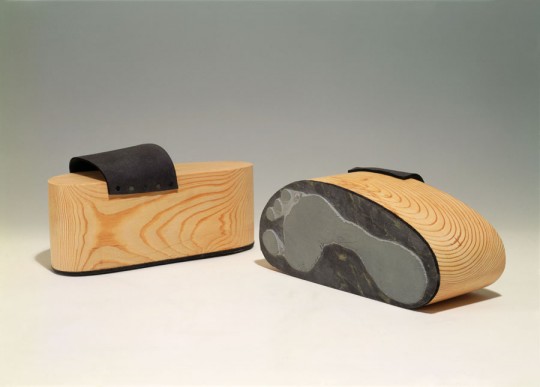
Untitled, Abigail Lane
As part of the Women of the World Festival Norwich Castle Museum’s Modern and Contemporary Gallery launched an exhibition of work exclusively by female artists. Due to the surprising level of historical under-representation of women artists in the Castle’s collection all of the art is modern and thus introduces new perspectives on the human experience in an eclectic plethora of inspiring styles and disciplines.
Visible Women takes it’s name from a book by Feminist Artist Penny Slinger (born UK 1947) Becoming an important figure of the 1960s Art world at the beginning of the ‘Sexual Revolution’ Slinger’s groundbreaking combination of surrealism and feminism documented an in depth exploration of her own identity while confronting the psychology of sex. Immediately as you enter the exhibition you are confronted with Slinger’s Headbox, a series of perspex boxes containing black and white imagery and objects like rejects from the Guy’s hospital where the specimens have taken on a life of their own. It demonstrates the compartmentalisation of that which is regarded as unnacceptable. The exhibition continues on this theme by exploring identity, diversity, gender roles and behavioural expectations.
The newest addition to the Castle’s collection is Aliza Nisenbaum’s Susan, Aarti, Keerthana and Princess, Sunday in Brooklyn, 2018. A huge, bold and colourful canvas dominates the centre of the exhibition. Up close you are invited to step into the intimacy of a cosy home setting. The ultimate modern family of a mixed race and same sex couple with their two children regard you, the observer with a calm gaze. They are surrounded by bright eclectic furnishings reflecting the diverse possibilities of the term ‘family unit’. You are challenged to judge this refreshing depiction of domestic harmony.
There is a sense of celebration throughout the exhibition which lightens the approach to a serious topic; redressing the balance of women represented in the Art World. Finding a running theme beyond the common gender at first proves tricky. However, within the diverse range of disciplines and statements from Bridget Riley’s bright, bold abstract canvas to Laurencen’s understated observations of her female subjects painted in muted colours with little to no scenery, the figure is the focus and introspection abounds. Barbara Hepworth’s ‘dancing’ sculpture revels in itself while the larger than life size photo of Frances Kearney’s mother steals a curious peep at her while she smokes in the bathroom.
On the wall halfway down the gallery a pair of blown up self portraits of the artist as her mother by the late Jo Spence, from the series Photo-Therapy and Narratives of Dis-ease, 1989. The pair of images continue the curiosity with this familial figure. Cindy Sherman comes to mind as the artist is also the subject but with Spence it is a more personal objective with a political twist. As she asserts the need to know and understand to whom we owe our existence these light hearted photos, which are imagined portraits show real empathy and respect where they lack flattery. It’s an exploration of the life of a housewife in wartime Britain and the pragmatism that launched a gender revolution in the absence of men.
In a glass case in the far corner you’ll come across Untitled by Abigail Lane, 1992. A pair of prodigious wooden mules that remind one of Japanese Gita. They bear the hallmark of Lane in their design: simple and contemporary. An alumni of the Young British Artists (YBAs) Lane’s work suggests the interaction between object and audience. The shoes are a tool for making Art and play with the idea of switching your identity with nominated persons. The soles bear bas relief footprints, possible copies of the user or of someone else. The audience is left to decide how to best exploit them be it to view the world from another perspective or to mislead a forensic team. From a design point of view there is a clear respect for the shoe’s materials and what they offer. Having been selected and treated to best showcase their component qualities the black upper contrasts against the brightness of the wood with its visible grain. You feel the weight of the wooden block, the sturdiness of the neatly nailed in strap. One imagines wearing them that they would pull you back to the ground as soon as you lift each foot.
The theme of Lane’s Untitled has been described as an absent presence, the traces that people leave behind. In the context of this exhibition that could mean so many things. Genetic traces through motherhood, breaking ground in gender roles and making history or simply making art, made more poignant by the fact that here are a mixture of artists alive and dead; Visible Women makes some excellent metaphorical statements on behalf of 50% of the population.
Alice Bouttell